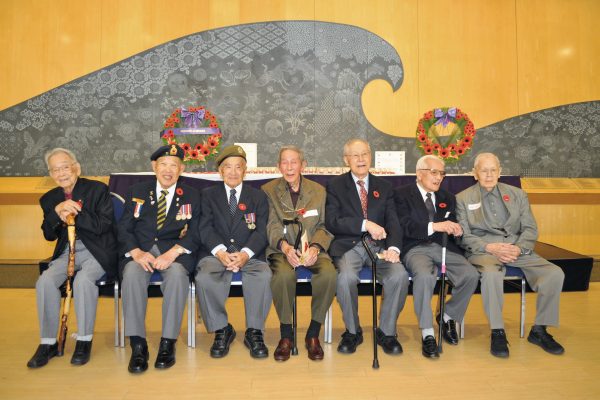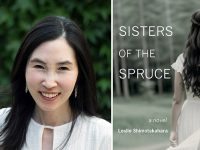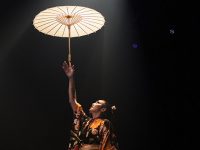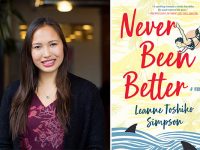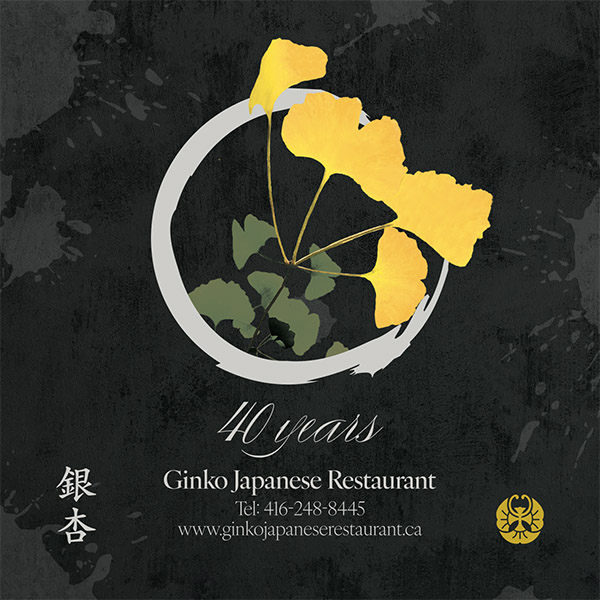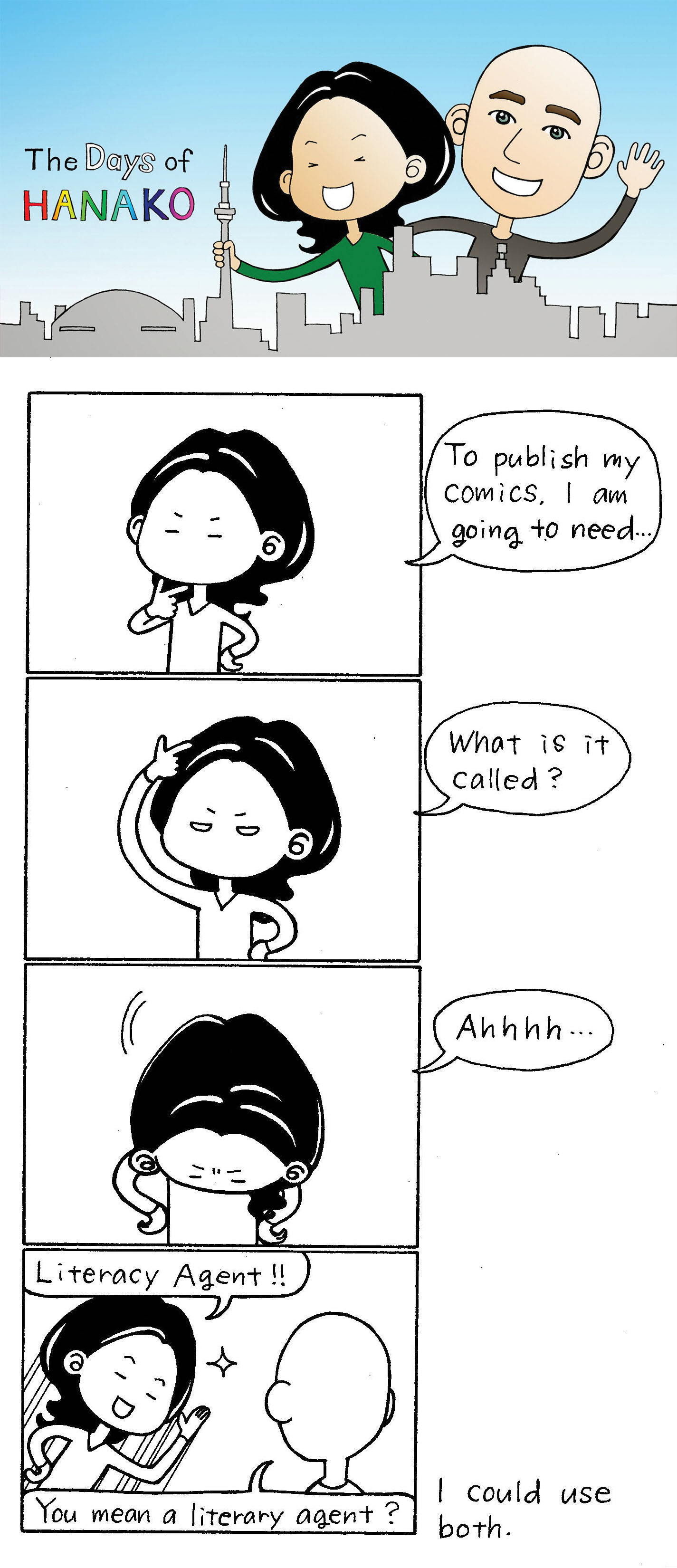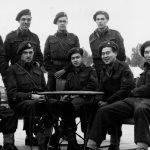“So up I went to the hakujin lieutenant at the front desk, saluted and said, “Sir, we’re Japanese Canadians, are we allowed to vote today?”
By this, the fourth week of October, the Toronto Raptors, have chalked up six wins, a most enjoyable start to the basketball season. Keep it up, fellows.
That week also included Ontario municipal elections on Oct. 22. The results were not surprising, but the voter turnout was disappointing, with only 41 per cent of those eligible to vote.
I have a feeling the older Japanese Canadians in our province would not have stayed away from the polls. Many of us are originally from B.C. and didn’t have the right to vote anywhere in Canada until June 1948.
To vote this month, Betty and I only had to take the elevator down a few floors because our voting poll was in our condo building. But in the past, we’ve been willing to walk or drive long distances, because voting is a must for us. While waiting for the election results, my mind went back to the very first time I was allowed to vote in a Canadian election. Despite being born in Canada, Japanese Canadians had been denied the vote since the 1890s.
For me and some other Niseis, our first vote opportunity to vote happened in 1945, after we became soldiers in the Canadian Army. The national ban on our enlistment had been lifted because Japanese-language interpreters were desperately needed by British forces in Southeast Asia for Japanese prisoners of war.
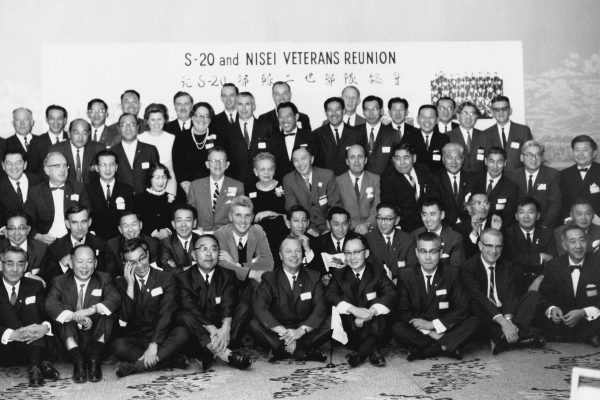
Photograph from the 1967 S-20 and Nisei Veterans Centennial Reunion, October 7, 1967, King Edward-Sheraton Hotel, Toronto, Canada. Photo courtesy: Yatabe Family Collections.
Our group of 23 Nisei privates was on a troopship crossing the Atlantic, from Halifax to Liverpool, on our way to Asia. A notice went up about voting day on the ship. We went along, but as we waited for our turn to get a ballot, one of the guys said, “Frank, will you go ask the officer if us Japanese Canadians can vote? We never have before.” So up I went to the hakujin lieutenant at the front desk, saluted, and said, “Sir, we’re Japanese Canadians, are we allowed to vote today?” The blond officer stood up to his full six-foot-plus height, glared and roared, “Private, everybody in the Army votes!” So I said, “Yessir” and happily rushed back to my comrades. It was the first time each of us had voted.
The irony is that after a year or so serving of Canada in uniform in different parts of Asia, when we returned home and became civilians again, the same old restrictions—including no voting—applied to us again, even if we were overseas veterans. In fact, it wasn’t until 1948 that Japanese Canadians got the federal vote—which meant we could finally vote in provincial and municipal elections as well.
This year’s election day took place the day after the Japanese Canadian Cultural Centre’s annual Arigato Day in Toronto. Hosted by the JCCC Board of Directors, it’s an opportunity to express thanks to the many volunteers for contributing to the successful activities that make the centre so appealing.
On Sunday, Oct. 21, nearly 300 members gathered for the event in Kobayashi Hall. Betty and I attended because, in addition to being a volunteer, I had been asked to participate in a certain award presentation. Under Marty Kobayashi’s cheerful MCing, we played bingo and then tried a team competition quiz game. After some awards, the bento dinner arrived. As usual, they were supplied by Mr. Ishii, who makes everything so tasty.
Next on the program was the Nisei Veterans’ Award, given for the 12th year. Second World War veteran, Tom Nishio, who created this award, was present with his daughter, Robynn.
As the presenter, I went up to the stage. Climbing up the short stairs, I got to the stage with the help of a couple of youngsters. Not just because of my age, but less energy and a sore ankle made me limp. I introduced Tom Nishio, who got on the stage, as well. Here is what I said:
“This award has been given out at Arigato Day for several years now and is a contribution to the Japanese Canadian Cultural Centre by Tom Nishio, who is a Second World War Canadian Army veteran. As the official description of this unique award says: “The award came from a desire to remember and recognize the dedication and loyalty to Canada of Nisei veterans during the Second World War. To this end, the award recognizes young people in the JCCC’s martial arts and odori dance programs; particularly those exceptional members who reflect the same beneficial spirit and values that made Canadian Nisei veterans enlist when the ban against us doing so was finally lifted in 1945.”
If you go to the martial arts dojos of the JCCC, on the wall opposite the dojos is a plaque with the names of the past Nisei Veterans Award recipients. And the winner or winners each year get an award certificate, plus one year’s class tuition in their particular martial art or odori group, as well as a one-year JCCC membership.”
***
Earlier this month, one of the few remaining Canadian Nisei veterans, Min Yatabe, passed away. He was 96 year old. Min was so active in the local Japanese community that I am sure many of you knew him. As it happens, Tom Nishio, Min, and I are all graduates of Kitsilano High School during our Vancouver years, before we were kicked out of the B.C. coastal area in 1942. Tom graduated in 1939, a year ahead of Min and me. We were so proud that Tom, a fine athlete, became captain of the Kitsilano High School’s English rugby team and Canadian football team. At pep rallies, we noted that he not only was smaller than the other guys but was the only non-white player.
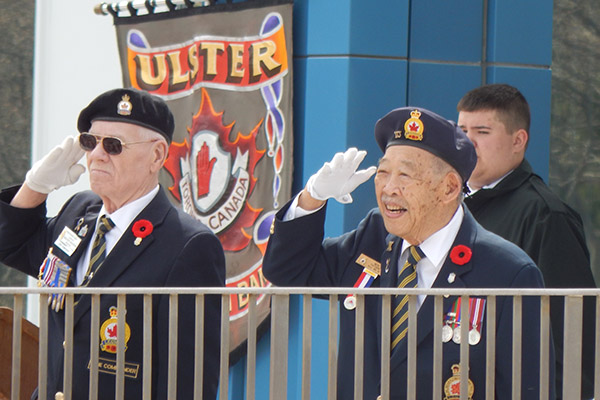
Min Yatabe during the Vimy Ridge 100 year memorial at York Civic Centre in April 2017.
By 1945, we had all moved from B.C. to Ontario or Quebec. Then the B.C. ban against Japanese Canadians or Chinese Canadians enlisting in the Canadian military was lifted. The three of us were among the 119 Niseis who enlisted. We were allowed to volunteer for one military purpose: To become Japanese-language interpreter-translators in the Canadian Army attached to the British forces in Southeast Asia to deal with Japanese prisoners of war.
But back to this year and the winner of the Nisei Veterans’ Award.
***
But back to this year and the winner of the Nisei Veterans’ Award. This year’s winner was Ryan Sai.
“Here is why Ryan Sai, a young JCCC kendo club member, has been nominated for the award:
“The kendo tuition program comes in two parts: The non-bogu group is the beginners’ class. Those qualifying for full equipment are in the bogu group.
The notation from the Kendo Club says: “Although a teenager, Ryan led the 2018 new non-bogu group through the transition from non-bogu to bogu. He led the group in responsibilities and duties such as cleaning the dojo, welcoming new members, as well the opening exercises.
”And in the kendo program, the vast majority of non-bogu members stop practicing after graduating to the bogu class. But with Ryan’s help, the Kendo Club saw the highest retention rate to date. So Ryan Sai is a vital member of the JCCC Kendo Club. Congratulations, Ryan, keep enjoying Kendo.”
Then young Ryan Sai came to the mic and gave his thanks.
By the way, JCCC executive assistant Sandy Chan organized the successful Nisei Veterans’ Award presentation. She deserves our congratulations, too. Sandy informed me that the last item on the Arigato Day program was to present the Ontario Volunteer Service Awards to 19 recipients—six for arts and culture, six for operations, six for special events and one for youth.
That told us thankful members how our cultural centre is so very important in our community and makes us so proud to be a part of it.
***







 14 Nov 2018
14 Nov 2018
 Posted by Frank Moritsugu
Posted by Frank Moritsugu 